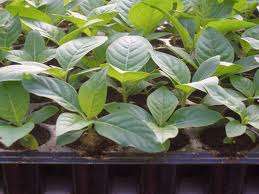| PlantID | 0030 |
| Botanical Name | Anthocephalus chinensis |
| Common Name | Kadam |
| Classification | | Kingdom: | Plantae | | Subkingdom: | Tracheobionta | | Division: | Magnoliophyta | | Class: | Magnoliopsida | | Subclass: | Asteridae | | Order: | Rubiales | | Family: | Rubiaceae | | Genus: | Anthocephalus | | Species: | chinensis |
|
| Part used | Bark, leaves and fruits. |
| Medicinal Properties | Bark: vulnerary, astringent, aphordisiac, cooling, alexiteric, febrifuge and tonic. Fruits: aphrodisiac and stomachic. |
| Medicinal Use | Bark: blood diseases, uterine complaints, biliousness, burning sensation, cure of bowels. Leaves: decoction is used in ulcers, wounds and metrorrhea. Fruits: leprosy, dysentery. |
| Chemistry | Cadambine, cadamine, isocadamine, 3-alpha-dihydrocadambine, 3-alpha-isodihydro-cadambine, 3-beta-dihydrocadambine and 3-beta-isodihydro-cadambine. Leaves: hentriacontanol and bita-sitosterol. Dried stem-bark: sapogenins, cadambagenic acid and quinovic acid, bita-sitosterol and four saponins, viz. saponins A, B, C and D, steroids, alkaloids, fats and reducing sugars. Heartwood: alkaloids cadambine, 3-alpha-dihydrocadambine and isodihydrocadambine. |
| Cultivation | NA |
| Regional Habitat | Occurence rare. Low levels of ghats, in wet places. Sirohi district, Rajasthan. |
| Description | Deciduous, tall tree, branches cylindric, spreading at the top, bark dark grey with longitudinal fissures, wood yellowish-white and soft. Leaves: shortly petiolate, stipules lanceolate, lamina acute-obtuse at the base, ovate, elliptic-oblong, glabrous adaxially, pubescent abaxially, apex acute. Flowers: pentamerous, calyx lobes oblanceolate, persistent, corolla 5-lobed, orange tinged, Stigma white narrowly clavate. Fruits: large, fleshy. Seeds: angular. Flowers appears during hot and rainy seasons. Fruits appears during October-November.
|
| Image |  |


